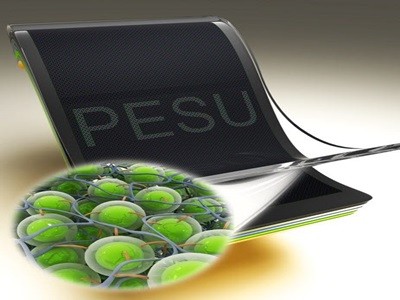Sungkyunkwan University (President Shin Dong-ryeol) announced on December 18 that the university worked with Electronic Materials R&D Center Asia Pacific of BASF, the world’s leading chemical company, and succeeded in developing a plastic flexible substrate technology for displays.
Through a joint industry-university research for development of materials technology for next-generation displays, the university has now secured a plastic substrate materials technology that has transparency and thermal expansion coefficient that are equivalent to that of a glass substrate.
A research team led by Professor Lee Ki-ra, Professor Cho Sung-min, Professor Yoo Pil-jin, and Professor Kim Deok-joon of Sungkyunkwan University’s Chemical Engineering Department and Mark Schroeder, who is the head of the R&D center, made nanocomposite film by combining nanoparticles that have their refractive indexes adjusted with BASF’s polymer called PESU (polyethersulfone). Because the new composite film material has excellent transparency and low thermal expansion coefficient, it can be used as plastic flexible substrate for next-generation OLED displays that require high performance stability.

The research team and Mark coated SiO2 (silicon dioxide) nanoparticle on top of ZnS (Zinc Sulfide) particle so that the nanoparticle has a same refractive index as that of PESU and they have materialized a nanocomposite film with 90% relative transparency. At the same time, they induced chemical bond between the nanoparticle and the polymer so that the nanocomposite film’s thermal expansion coefficient is 12 ppm/oC that is considerably lower than the current requirement for OLED manufacturing process which is 20 ppm/oC.
Their result was selected and published as an internal cover paper of an international scientific journal Advanced Materials Interfaces. The joint research team is currently working on follow-up studies in order to commercialize plastic flexible substrate for OLED displays.
“This is the first practical joint study through cooperation between two of the top universities and global companies and we believe that it will be the most outstanding model of a global industry-university cooperation that top universities in the world is seeking.” said President Shin Dong-ryeol.
Mark Schroeder said that through cooperation with a top South Korean university and its research groups, BASF was able to succeed in developing a new nanocomposite material with excellent properties that can be applied to various electronic devices.
Staff Reporter Kim, Myunghee | noprint@etnews.com